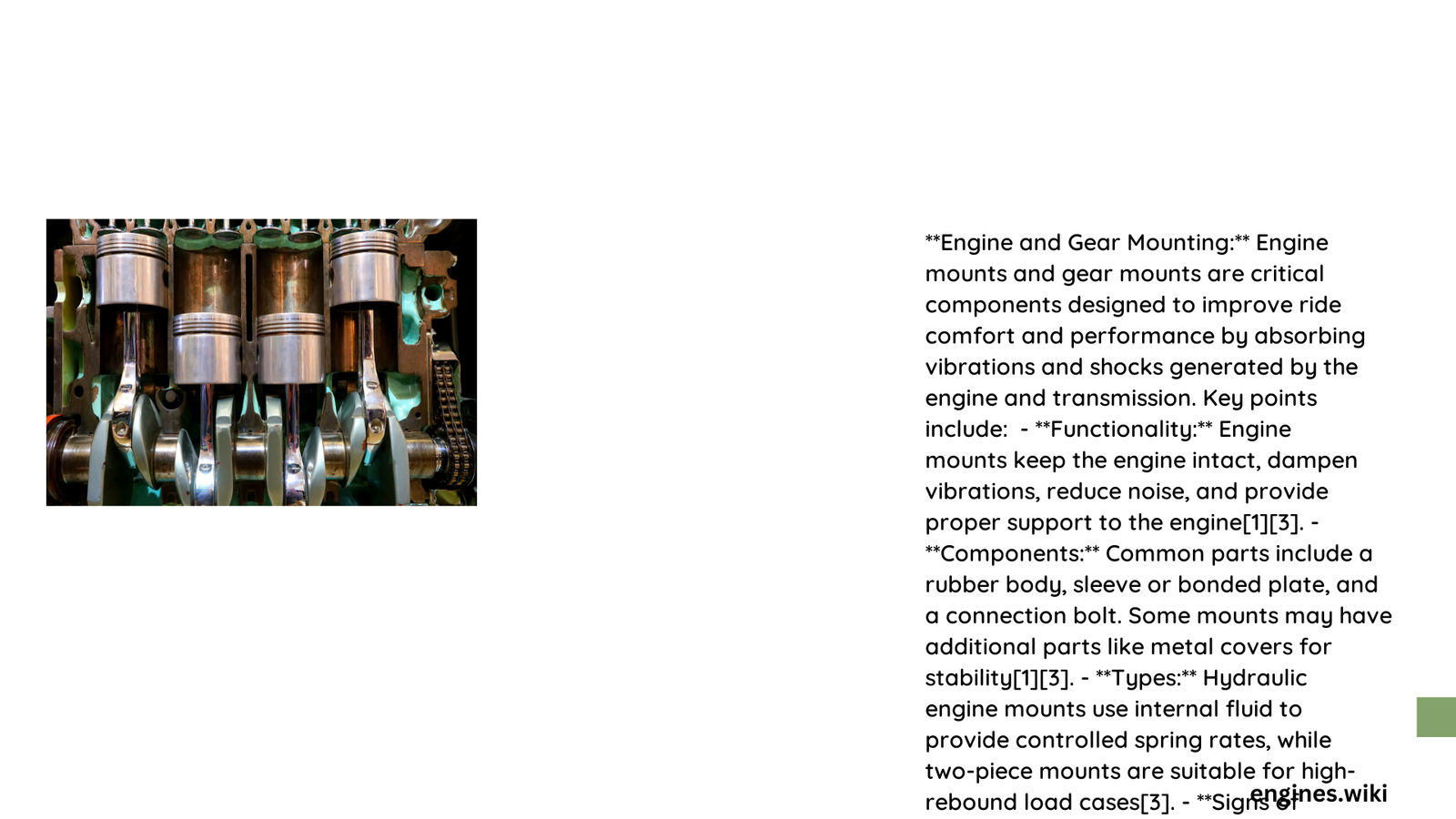Engine and gear mounting represents a critical engineering interface where mechanical precision meets performance optimization. Vehicle powertrains demand sophisticated mounting solutions that balance vibration dampening, structural integrity, and dynamic load management across diverse automotive applications. Understanding the intricate relationship between engine mounts, transmission interfaces, and chassis design enables engineers and automotive enthusiasts to achieve superior vehicle performance and reliability.
What Makes Engine Mounting Critical for Vehicle Performance?
Understanding Mount Fundamental Mechanics
Engine mounts serve multiple crucial functions beyond simple structural support:
- Vibration Absorption: Minimize mechanical oscillations transmitted from powertrain to chassis
- Load Distribution: Evenly spread mechanical stresses across mounting points
- Thermal Management: Provide insulation against extreme temperature variations
- Structural Alignment: Maintain precise powertrain positioning
Types of Engine Mount Technologies
Hydraulic Mount Systems
| Mount Type | Key Characteristics | Performance Range |
|---|---|---|
| Fluid-Filled | High Damping Capacity | Medium-High Power Engines |
| Gel-Based | Enhanced Shock Absorption | Luxury/Performance Vehicles |
| Adaptive | Dynamic Stiffness Adjustment | Advanced Automotive Platforms |
Material Composition Considerations
Selecting appropriate mount materials involves evaluating:
- Rubber Compounds
- Cost-effective
- Moderate vibration absorption
-
Limited temperature resistance
-
Polyurethane Alternatives
- Superior durability
- Enhanced performance characteristics
-
Higher manufacturing costs
-
Hybrid Configurations
- Combine multiple material properties
- Customized engineering solutions
How Do Precision Alignment Techniques Impact Mounting Performance?
Measurement and Calibration Strategies
Critical alignment parameters include:
- Torque Axis Positioning
- Elastic Center Calculations
- Dimensional Tolerancing
- Vibrational Frequency Management
What Challenges Emerge During Complex Mounting Configurations?
Performance Limitations
Engineers must address:
- Thermal expansion effects
- Mechanical stress concentrations
- Dynamic load variations
- Fatigue resistance requirements
Advanced Mounting Optimization Techniques
Computational Modeling Approaches
Modern mounting design leverages:
- Finite Element Analysis (FEA)
- Computational Fluid Dynamics (CFD)
- Machine Learning Predictive Models
Installation Best Practices
Recommended Mounting Procedures
- Verify precise dimensional specifications
- Use calibrated torque instruments
- Implement systematic alignment checks
- Conduct comprehensive vibration testing
Conclusion

Effective engine and gear mounting transcends simple mechanical attachment, representing a sophisticated engineering discipline requiring multidisciplinary expertise.
